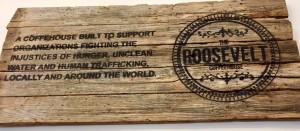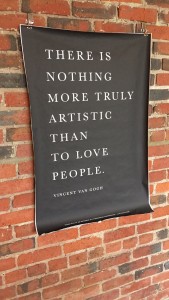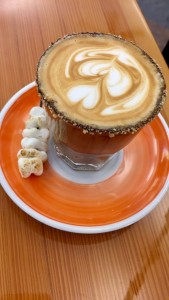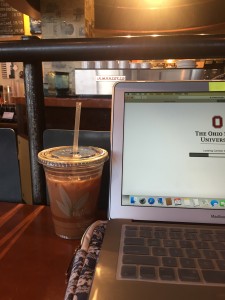The first week and a half of action for Earth Month has gone pretty well. The first week I used my social media to spread awareness about slaughterhouses. I posted a photo of my some facts I had written down including things like “the beaks of chicken are often removed to reduce the excessive feather pecking and cannibalism seen among stressed, overcrowded birds” and “hogs, chicken, and cattle waste has polluted 35,000 miles of rivers in 22 states and contaminated groundwater in 17 states.” I also included my Earth Month Action Plan as well as other small ways for people to make a difference. Finally, I posted a video of some undercover footage of slaughterhouses. I was a little nervous to do this because it is unlike me to post about controversial or political things. I know that a lot of people get annoyed with vegans who post about their lifestyle. The only problem that I faced with this was that my friend’s dad replied back with some negative words including “#disappointed.” ): I realize now why nothing political is getting down about our environmental issues- a lot of people are still against these ideas.
This week I am eating vegetarian dinners and it has gone well so far. I am usually just eating quick microwaveable meals so it is easy to stay away from meat, especially when I can still eat some for lunch if I need. I have realized that I really am capable of going vegetarian or vegan, if I take it slow. For the final two weeks I will be doing vegan lunches, and no meat all week. I am more nervous for this because it will be more challenging to find vegan options. It will also be important for me to make sure I am getting protein in other ways. I think it will be a really good thing for me to see what it would be like to be a vegan, though. Also, even a week without meat will save so many animals. I think it is important for me to talk the talk AND walk the walk.







 I have chosen the Coffee and Tea themed list for this semester! I am really excited to get to adventure in different parts of columbus all while experiencing local, unique, coffee shops that I am sure I will return to when the project is done. This assignment will force me to get off of campus and see what else the city has to offer me. It will introduce me to some new study spots, delicious coffee, and time with friends. This to do list will also give me the opportunity to improve my busing skills so I can feel more confident to ride them alone. I have already been to two of the coffee shops, both of them in the Short North Arts District. I went with my fellow ENR Scholars, Sophie and Tess. The first was Impero Coffee Roasters- a quaint coffeehouse, with an old record player releasing relaxing tunes and friendly employees. It was the perfect mix of modern and vintage. I got an iced mocha, and it was delicious! We stayed here for a couple hours to study and I noticed that there were other students studying here, as well. I would go back to Impero and recommend my friends to give it a try too, but I do not think it will be “my spot.” It just needs a little more space and a couple more coffee options! The second place we ventured to was Mission Coffee Co- and what a unique set up this was! The coffeehouse had an industrial set up, with a rustic metal, brick, and wood aesthetic. There were both tables and couches, giving it a hipster vibe- “chill” and “classy” all at the same time. I ordered an autumn special at this stop, and it tasted just like fresh fall in a cup! Yum! I would love to go back and spend more time at this cool spot, and will definitely bring more friends along to show them the secret escape! I would say that the first two checks off of our Columbus coffee to do list were successful!
I have chosen the Coffee and Tea themed list for this semester! I am really excited to get to adventure in different parts of columbus all while experiencing local, unique, coffee shops that I am sure I will return to when the project is done. This assignment will force me to get off of campus and see what else the city has to offer me. It will introduce me to some new study spots, delicious coffee, and time with friends. This to do list will also give me the opportunity to improve my busing skills so I can feel more confident to ride them alone. I have already been to two of the coffee shops, both of them in the Short North Arts District. I went with my fellow ENR Scholars, Sophie and Tess. The first was Impero Coffee Roasters- a quaint coffeehouse, with an old record player releasing relaxing tunes and friendly employees. It was the perfect mix of modern and vintage. I got an iced mocha, and it was delicious! We stayed here for a couple hours to study and I noticed that there were other students studying here, as well. I would go back to Impero and recommend my friends to give it a try too, but I do not think it will be “my spot.” It just needs a little more space and a couple more coffee options! The second place we ventured to was Mission Coffee Co- and what a unique set up this was! The coffeehouse had an industrial set up, with a rustic metal, brick, and wood aesthetic. There were both tables and couches, giving it a hipster vibe- “chill” and “classy” all at the same time. I ordered an autumn special at this stop, and it tasted just like fresh fall in a cup! Yum! I would love to go back and spend more time at this cool spot, and will definitely bring more friends along to show them the secret escape! I would say that the first two checks off of our Columbus coffee to do list were successful!


